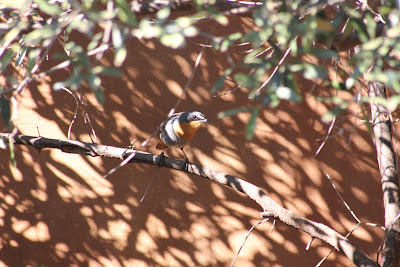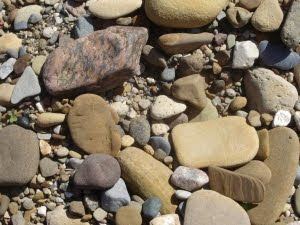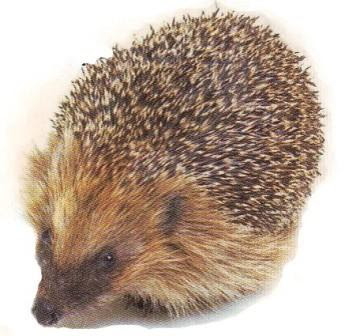My OC Cape Robin (Cossypha caffra) – keeping an eye on me while I fill up the feed
tables
I still have not been able to capture a pic of my OC
(Obsessive Compulsive) Robin in my kitchen – he’s as fast as lightning when he
sees me approach. Doesn’t leave in a panic, but just fast enough so that I
can’t get a photo. He’s also taken to sitting on the back of one of the dining
room chairs and singing his full song, the whole repertoire! The song consists
of variable short passages of musical notes, always starts with low slurred
whistle cherooo-weet-weet-weeeet.
Couldn’t believe my ears when I heard it so close-by from my studio and, upon
investigating, there he was, singing to his heart’s content!
 Another discovery I’ve made is that I now have two Robins in
the garden. My Robin was sitting near the feed table and I heard another one
higher up in the tree and I am hoping that it’s a female. Now I know that, most
often, it is usually the males that sing to announce that they hold a
territory. The song warns other males to keep away, while enticing females to
come closer. The song itself also identifies the species of the singer: it does
not do to fraternise too closely with the wrong species!
Another discovery I’ve made is that I now have two Robins in
the garden. My Robin was sitting near the feed table and I heard another one
higher up in the tree and I am hoping that it’s a female. Now I know that, most
often, it is usually the males that sing to announce that they hold a
territory. The song warns other males to keep away, while enticing females to
come closer. The song itself also identifies the species of the singer: it does
not do to fraternise too closely with the wrong species!
Although the basic tune, tone and volume are always the
same, subtle differences exist between individuals. In fact every individual
has a unique voice. Each Robin recognises its neighbour’s voice exactly as we
humans know a friend over the phone. This is very useful to a Robin because a
quick early morning burst of song tells everyone who is who, no need to spend
unnecessary energy on old established relationships. On the other hand, if a
newcomer appears there will be much jousting in defining new boundaries.
And now I’ve discovered something new – he likes apple!
Caught him snacking on the fruit on one of the feed tables and I only managed
to get some photos through the lounge window – as soon as I went (slowly)
outside, he flew up into the tree, keeping a vigilant eye on me.
Hoping that Robbie might choose the 'Money Plant' hanging on my patio to nest in.
I have been told that Robins
will sometimes nest in a pot plant inside the house. Then arrangements must be
made to have some opening where they can go in and out. That’s not a problem
here, my lounge door is always open, so I’m just hoping I will be that lucky
enough as to have him bringing his wife inside soon. The Cape Robin-Chat
is monogamous unless its mate dies. In the event of a partner dying Cossypha
caffra will seek out a new mate.
Robbie's snack of mince meat set out on the kitchen counter
Nico Myburg of ‘VillageLife’ reports, “One could write a whole story about the nesting sites chosen by
robins. In the wild they will nest low down in thick bush, or low down in a
bushy tree. Once they move into your garden, which they seem to prefer, being
the first bird to move in where people have settled, they may nest in hanging
baskets of ferns, in pot plants or empty baskets lying in a corner on the
stoep. There are a number of records of robins building their nests in a jam
tin containing nails or screws, inside a discarded shoe in the garage or in a
pile of fire wood. One nested in an open drawer with old clothes in.”
The lampshade (with proof of his visits) where Robbie spends a lot of his time - will have to replace the shade soon!
::




























